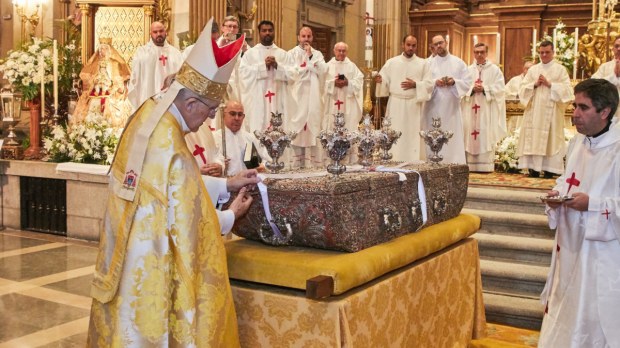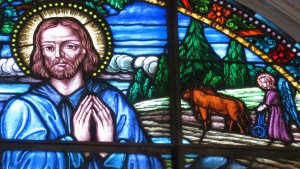Isidore the Farmer lived between the 11th and 12th centuries. Born in Madrid around the year 1070 in a poor and devout family, he was baptized with the name Isidore, after the sixth century saint and scholar Isidore of Seville, often referred to as “the last scholar of the ancient world.” A farmworker in the service of the wealthy landowner Juan de Vargas, he is the patron saint of farmers, and of the Spanish capital city, Madrid. As this year marks the 400th anniversary of his canonization, Pope Francis granted a jubilee year to the diocese of Madrid, the Holy Year of San Isidro.
As read in Zenit, the urn containing the incorrupt body of the saint was opened last Saturday, May 21st. By Monday 23rd, more than 30,000 devotes had already visited the Collegiate Church (a magnificent baroque building right in the center of Madrid), which has housed his remains since 1769, when the church was rededicated. The building is also home to the remains of Isidore’s wife, María de la Cabeza, whose canonization is still pending.
The Collegiate Church of Saint Isidore
The church of San Isidro El Real was designed by the famed baroque architect Pedro Sánchez in 1620. He oversaw its construction until his death in 1633. The work was finished in 1664, by Francisco Bautista and Melchor de Bueras.
The church was built to replace the parish church of St. Peter and St. Paul, which had been demolished to make room for the Imperial College, as commanded by the Holy Roman Empress Maria of Austria, daughter of Charles I and sister to King Phillip II of Spain: in her will, she left her fortune to the Jesuits so that they could finish the building.
The church was consecrated on 23 September 1651, thirteen years before its completion. Since it belonged to the Jesuits, the church was dedicated to to Saint Francis Xavier. But when the Jesuits were expelled in 1767, the building became a collegiate church. Two years after that, with the arrival of Saint Isidore’s remains, the church changed its name to San Isidro El Real.
Saint Isidore “Labrador”
Isidro de Merlo y Quintana (the full Spanish name of Saint Isidore) is often referred to in English as “Saint Isidore the Laborer.” But that translation is somewhat inaccurate or, at least, insufficient. In Spanish, he is known as “San Isidro Labrador.” The Spanish word “labrador” derives from the verb labrar, meaning “to plow.” In a broad yet also very specific sense, labrar means “to work the land.” The English “laborer” does not include the farming overtones found in the Spanish labrador, which are essential to his identity as patron saint of farmers.


